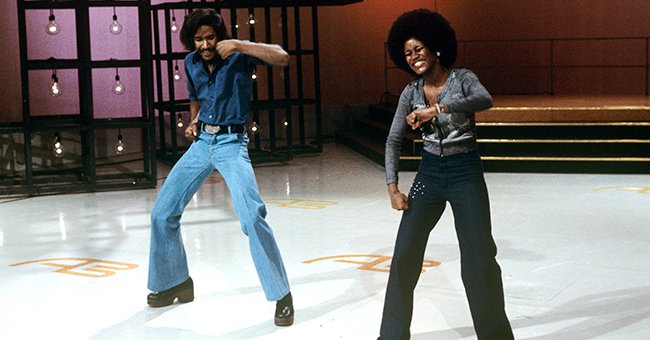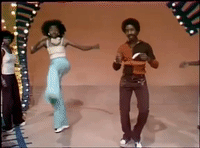
you start to see white folks or non-Black folks of color begin to kind of make appearances in the line. One thing that you notice when you watch the evolution, particularly of the Soul Train line, is that as you get kind of late in the '70s, and especially in the early '80s.

Now, those weren't the folks we saw, at least not at first. It got so popular that these kids were wrapped around the corner waiting to get on the dance show.Ībdurraqib: It's almost a myth to suggest that there was no white audience for the show. So these regular kids that went to the recreation center and made up these dances got to be on this platform, this national platform, where they were showcasing their talent. The dancers didn't need prior experience - producers often just plucked them from the crowd.īlount Danois: There was nothing like Soul Train on TV, where, you know, just regular kids were the stars. They embodied the cutting edge of style and their signature moves were copied in homes across America. Soul Train 's dancers were the heart of the show. People really wanted to see it.īlount Danois: If you missed it, you didn't have much to talk about in school on Monday. To be able to see others that looked like us was truly a beautiful experience.Ībdurraqib: I think places that did not pick up on the syndication at first very quickly realized there are markets where there is a real hunger for a show like Soul Train. It was at that time we would drop whatever we were doing and gather in the family den to watch Soul Train. on WPIX's Channel 11 out of New York City. My only connection to other Black folk happened every Saturday at 5 p.m.

Aside from the six of us, there was nothing even remotely Black about our small New England town. The only other Black person was my great aunt, who lived right around the corner from us. We were a Black family of five - my parents, older brother and younger sister. Peter Murray ( Soul Train fan): I grew up in 1970s Rutland, Vt. So sometimes I'd watch two episodes on a Saturday if I wanted to see the previous week's episode again.
#SOUL TRAIN DANCERS TV#
Then when cable TV arrived at my childhood home, I realized that the Chicago station, WGN, aired episodes one week ahead of the Oklahoma City episodes. I remember watching on my Oklahoma City UHF station every Saturday afternoon. Lehman (author, A Critical History of Soul Train on Television ): Because Soul Train was syndicated, not every channel aired the same episode the same day. To be able to see others that looked like us was truly a beautiful experience.Ībdurraqib: As it was approaching syndication, for it to be on this precipice of something, you know, maybe not beyond wildest dreams, but certainly probably beyond what his initial imagination was, the temptation is, "Well, I gotta make this as big as possible." But the prudent thing is what he did, which is to say, "How can I keep this mine?"Ĭhristopher P. By the end of the first couple of years, it was airing in more than 25 markets, and it continued growing. Don Cornelius became one of the first Black men to own and produce a nationally syndicated franchise. Appointment viewing across the nationĪfter only a year, Soul Train started securing sponsorships, moved to Los Angeles and expanded into national syndication on October 2, 1971.

And when he says anything, he means it and he wants it done. And that's what I've seen and what I've known from him personally.

Monique "Mo'Que" Chambers ( Soul Train dancer): He's a businessman. He always had the same gravitas, and he always seemed to imagine that this is what he was going to do. and then he had this baritone voice and he had the afro, which in the '70s was huge.Ībdurraqib: Everyone knows his voice was just an immensely beautiful instrument. You know, all of the '70s style, from the bell bottoms to the hats. He had suffered an aneurism and multiple seizures, and the pain forced him into a deep depression.Ericka Blount Danois (professor and author, Love, Peace, and Soul ): Soul Train had the hip factor, and mostly because Don was so hip. What was Don Cornelius illness?Īccording to NewsOne, Cornelius’s autopsy has shown that illness may have caused him to fall to suicide. The main Soul Train members in American Soul are fictional, although some real-life musicians such as Patti Labelle (played by Ledisi), James Brown (played by Darius McCrary), and Chaka Khan (played by Melanie Fiona) also make appearances on the show. How old was Don Cornelius when he died? Is Don Cornelius death?ĭon Cornelius/Date of death How much of American Soul is true?


 0 kommentar(er)
0 kommentar(er)
